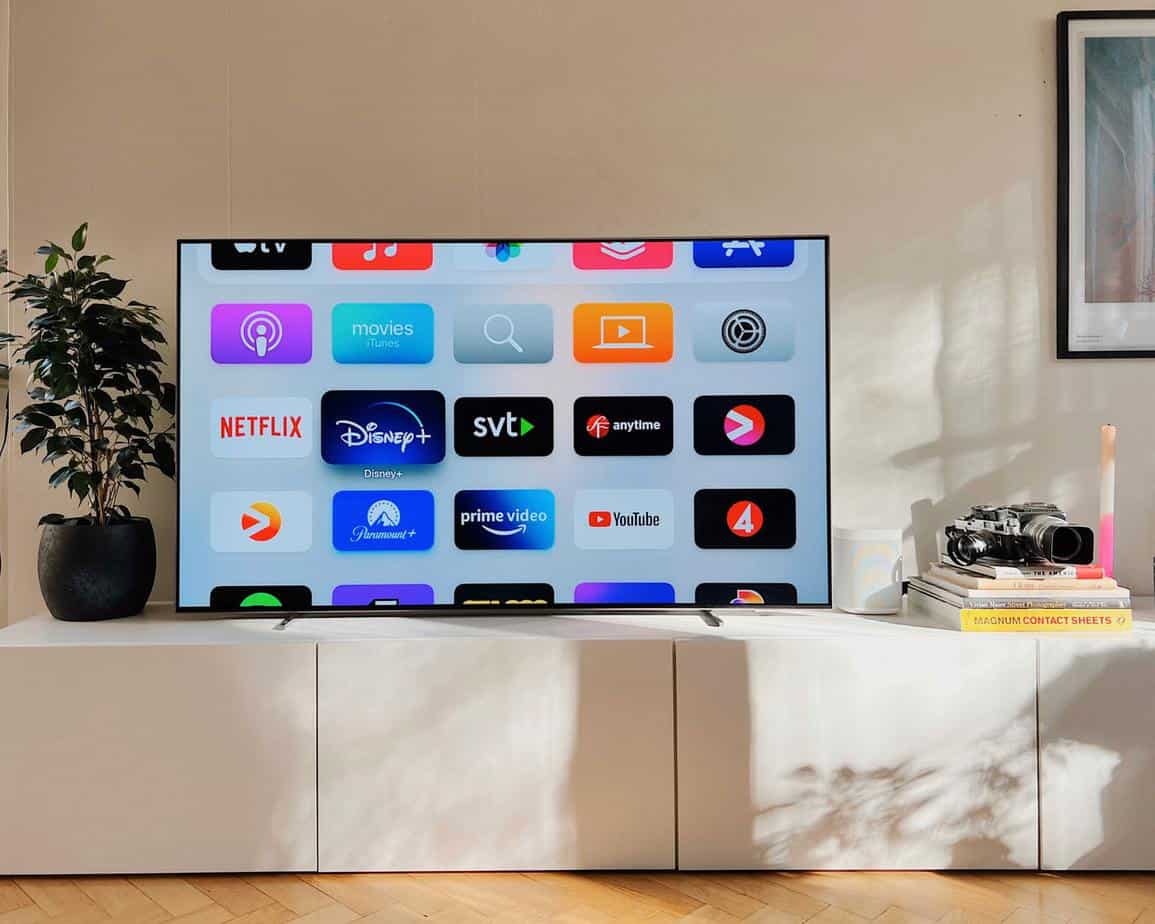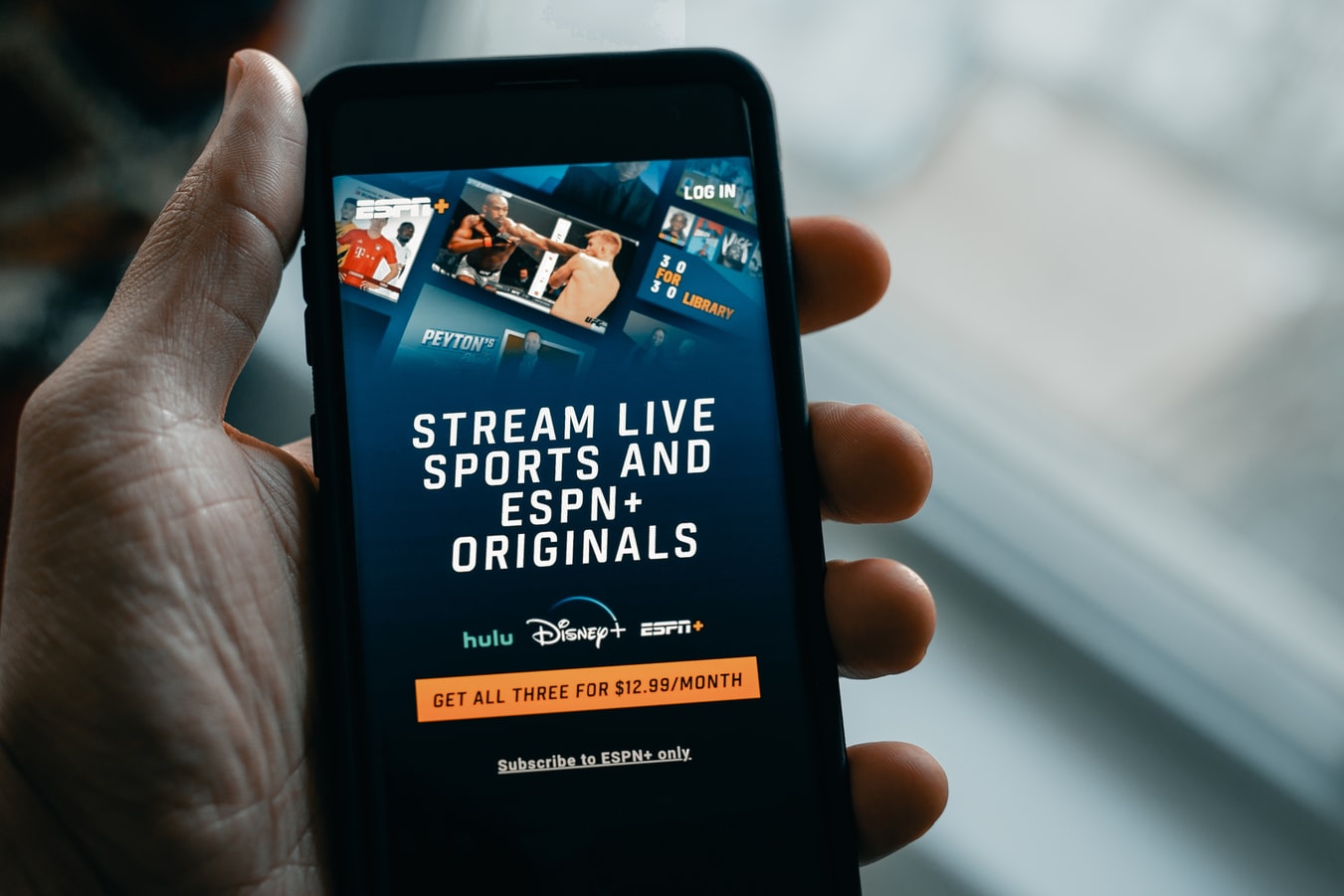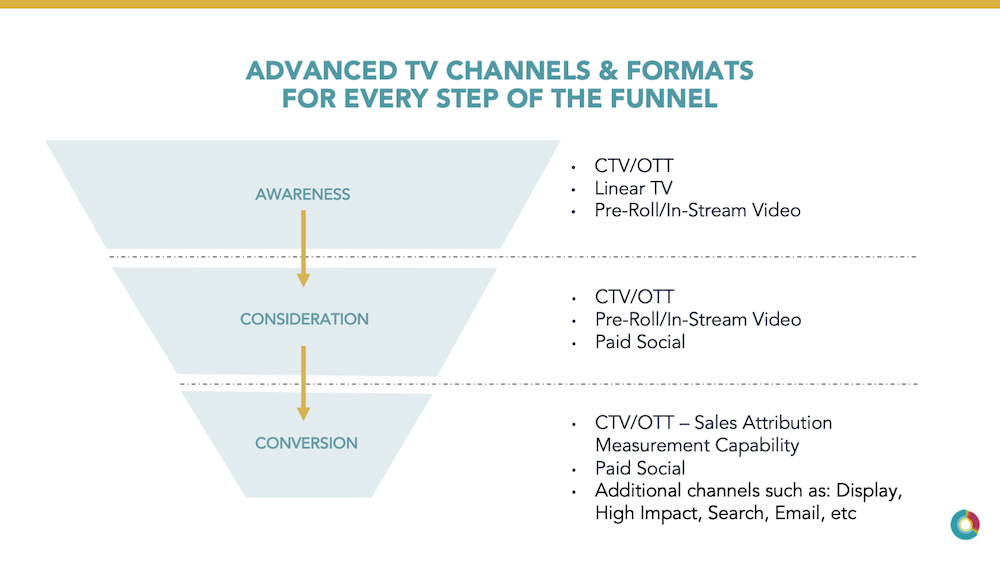Advanced TV in 2023
A Digilant Get Smart Series, Part 5: The Future of Advanced TV
In our newly released whitepaper, Advanced TV in 2023: The Trends, Technology, and Tools you Need to Succeed, we outline everything advertisers need to know about the rapidly expanding and evolving video advertising landscape. Over the next few weeks, we’ll dive even deeper into these trends and solutions over a four-part blog series. Stay tuned for more.
Download the full whitepaper here.
—
When you think about the advancement of TV in our modern world compared to the early 2000s, it’s easy to notice the rapid increase of streaming services taking over traditional broadcasting. Advanced TV is a new term that categorizes advertising that occurs before, during, and after a video stream on the internet. Have you ever watched a show on any streaming service, and an ad prompted you to scan a QR code for more information? That’s what advanced TV is.
With the advent of streaming, advertisers have been presented with a new avenue to connect with target audiences, and traditional advertising methods like commercials have become less effective. The emergence of streaming platforms has allowed advertisers to reach audiences in more personalized and relevant ways by targeting their ads based on viewing behavior, demographics, and interests.
However, with the increased accessibility of content creation, advertisers must create compelling and engaging content to capture the attention of their target audience. This process requires careful planning and execution of ad campaigns, including the use of creative formats and storytelling techniques to stand out in a crowded marketplace.
As an advertiser, you must continuously adapt and evolve your strategies to keep up with viewer behavior and technology changes. Despite the challenges, streaming offers advertisers an exciting opportunity to engage with audiences in new and innovative ways, driving brand awareness and, ultimately, revenue growth.
Why Ad-Supported Netflix Tiers Are a Great Opportunity for Advertisers
Netflix became a juggernaut when it introduced streaming media and video on demand back in 2007. Advertisers have a significant opportunity with Netflix due to its massive subscriber base and extensive data on viewer behavior. Although Netflix has traditionally been ad-free, it has recently started experimenting with ad-supported content.
There are now more people streaming TV than ever before, with 85% of U.S. households containing at least one streaming service. According to the Deloitte Digital Media Trends Study, U.S. users have an average of four streaming service subscriptions.
Advertisers can leverage this massive opportunity by using the platform to reach highly engaged viewers with targeted and personalized ads. Additionally, they can tap into Netflix’s data to gain valuable insights into viewer preferences and create more effective ad campaigns. With the potential to reach millions of viewers globally, advertising on Netflix can be a powerful tool for brands looking to increase their brand awareness and connect with their target audience.
Dominant Trends in Advanced TV (and How to Make Them Work for You)
Dominant trends in advanced TV include programmatic advertising, which uses data-driven technology to automate ad buying and targeting. Another trend is connected TV, which refers to internet-connected televisions that enable viewers to stream content from various sources. Additionally, interactive and immersive advertising formats, such as shoppable ads and augmented reality experiences, are gaining popularity.
Overall, the trends in advanced TV reflect a shift toward more targeted, personalized, and measurable advertising experiences fueled by advancements in data and technology. If you’re ready to begin advertising on advanced TV, the following four options are the best places to start.
1. Programmatic Advertising
Programmatic advertising gives you greater control and flexibility over your campaigns, ultimately leading to better ROI. It can also be used across various channels, including display, mobile, video, and even traditional TV, making it a versatile tool to help drive your advertising efforts.
2. Connected TV
You can use connected TV to partner with streaming services and networks to create exclusive ad-supported content, such as sponsored TV shows, movies, or documentaries. This approach enables you to align your brand with relevant and engaging content, leading to better brand recall and engagement.
3. Addressable TV
One effective way to use addressable TV is to create ads tailored to your target audience’s interests and preferences. For example, you could use Netflix-acquired data to target households with young children with advertisements for toys or family-friendly products.
4. Interactive and Immersive Advertising Formats
To effectively use interactive and immersive advertising formats, you must ensure the content is relevant, engaging, and aligned with your brand’s messaging. You must also ensure the content is optimized for the specific platform and device, as different formats may require different creative approaches.
These trends can transform your advertising approach and help you reach your target audience more effectively. With programmatic advertising, connected TV, and addressable TV, you can improve targeting and achieve higher engagement rates. Interactive and immersive advertising formats can offer a more engaging brand experience. These trends are powered by technology and data analytics, enabling you to optimize campaigns in real time.
Ready to Get Started With Advanced TV Advertising?
Digilant provides the tools and expertise to take your digital advertising strategy to the next level. Our innovative programmatic advertising solutions can help you reach your target audience more effectively and achieve your marketing goals. With advanced targeting and optimization techniques, we ensure that your campaigns deliver maximum impact and ROI.
Our marketing experts will work with you to create a customized advertising strategy that meets your unique needs and objectives. Don’t wait any longer to achieve your digital advertising goals — contact our team today and start seeing results.





